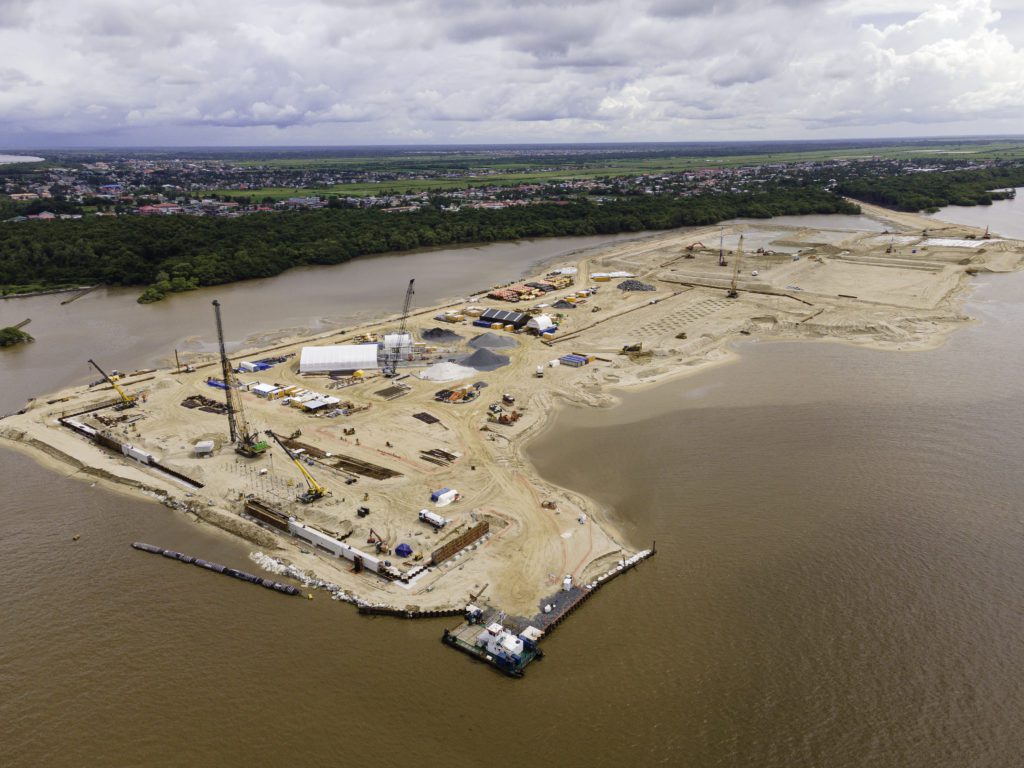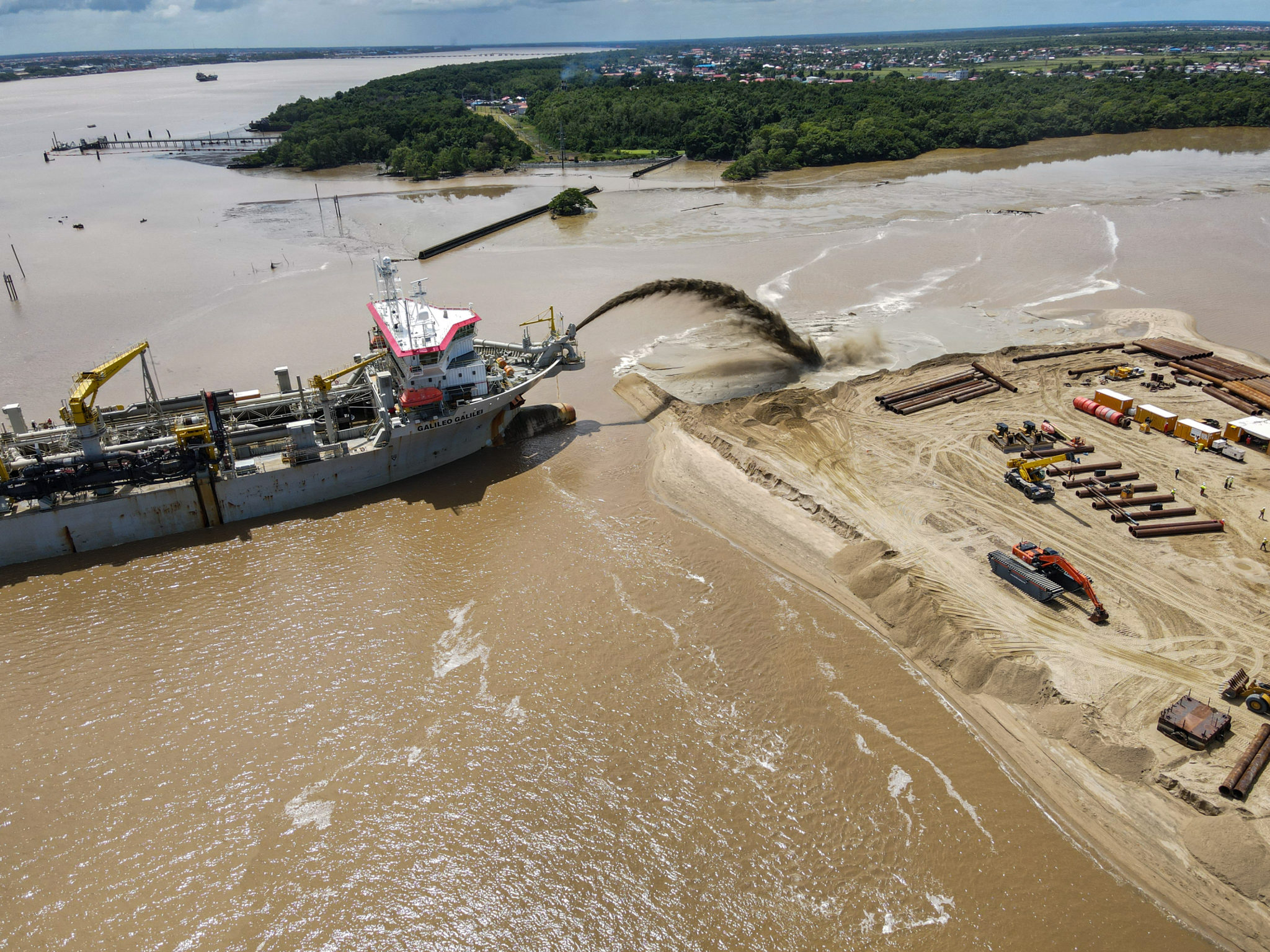M.V Galileo Galilei, the largest dredger ever to sail the Demerara River, has now made its exit from Guyana. This marvel, owned and operated by the Jan De Nul Group, leaves behind a testament to its efficacy – a 44-acre extension to Guyana’s coastline.
The M.V Galileo Galilei was entrusted with a monumental mission – the sand key reclamation phase of the Vreed-en-Hoop shore base. The dredger had to clear the predetermined area and lay the groundwork, quite literally, for the creation of an artificial island. This newly reclaimed land is destined to become the site for a new terminal. During its tenure in Guyana, the Galileo Galilei not only met its primary objective but also contributed to the maintenance of the channel.

Parallel to the Galileo Galilei’s efforts, Vreed-en-Hoop Shorebase Inc. (VEHSI) also marked a significant milestone. The completion of a 200M quay wall signifies progress, with only installations and construction procedures pending. These include fitting fenders and bollards, excavation in front of the quay wall, and setting up utilities, buildings, lighting, and electrical systems. As the December deadline inches closer, VEHSI is on the lookout to rope in more local service providers. Their recent advertisements indicate potential engagement of up to 90 service providers. The company’s vision extends beyond just the construction, with an active search ongoing for local companies to partake in Foundational and Facility Management Services in its shore base across Regions 3 and 4.
The freshly reclaimed 44-acre land, earmarked for a shore base facility, is part of ExxonMobil Guyana’s strategy to bolster its Stabroek Block operations. This facility is slated to become fully operational by December 2023, signaling an epoch in maritime facilitation – complete with docking, loading, and offloading capabilities for vessels. There’s more on the horizon with an additional phase scheduled for 2024.




